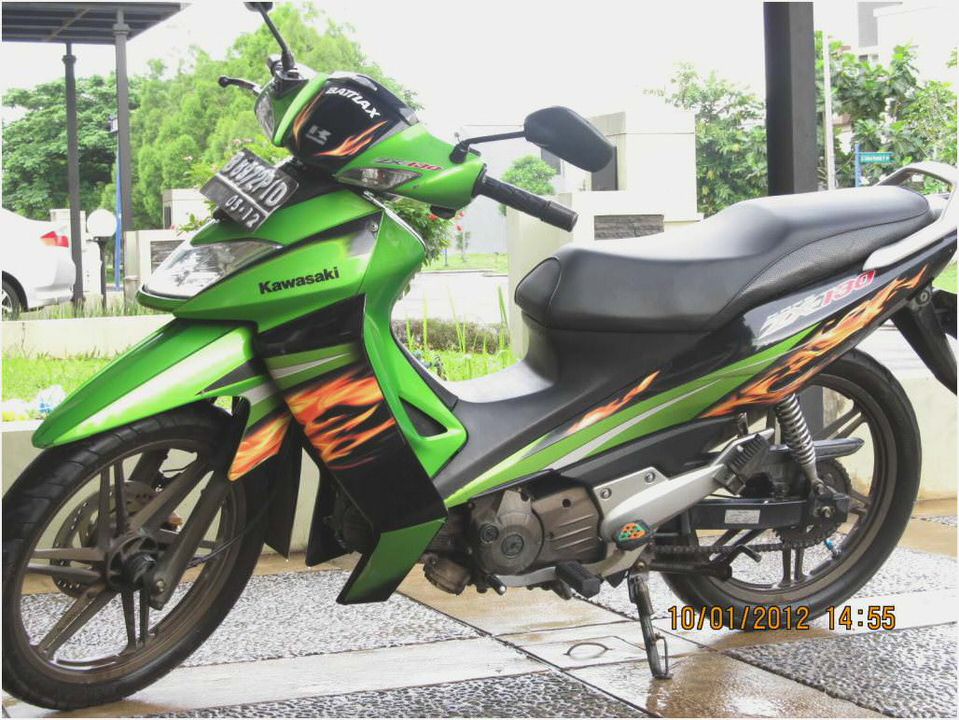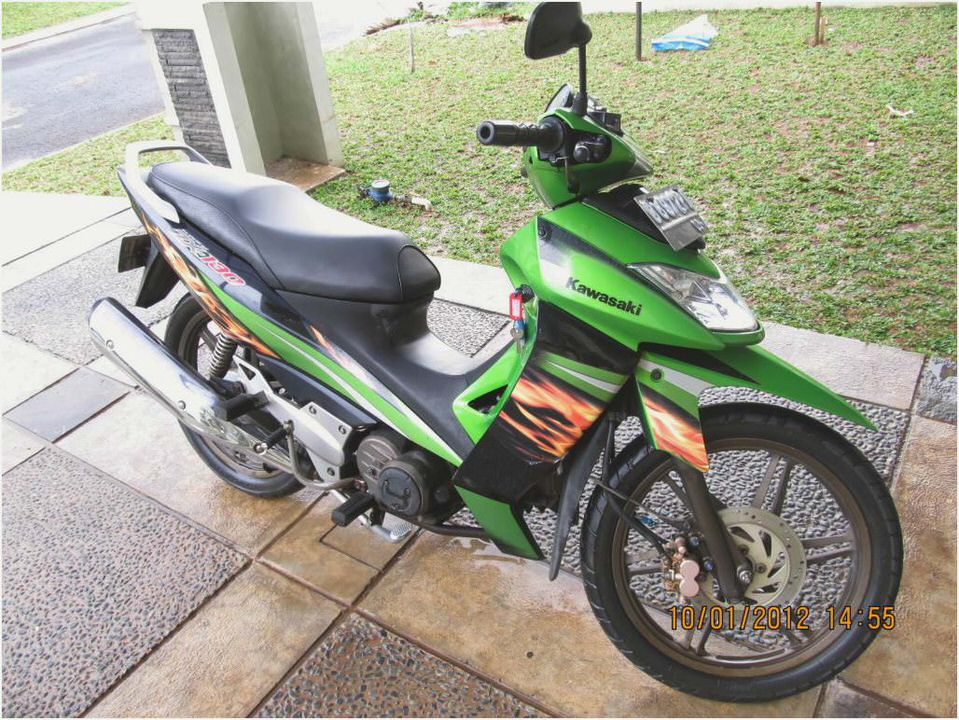
2010/2011 Kawasaki ZX-10R
Kawasaki recently filed patents for an in line four cylinder motorcycle engine with an uneven firing order. While similar to the design from Yamaha in the latest R1, the Kawasaki engine design steps things up a bit by adding some electronics to aid the uneven firing order.
The Kawasaki design would traditionally have had problems, in that the radical nature of the firing order would have made the engine incapable of running at low RPM, due to a lack of momentum in the crank on the long 540° revolution. The second problem would have been the requirement for a very heavy and almost impractical crankshaft, which would have made the engine slow to rev, and would have limited high end RPM.
Kawasaki have solved these problems by using clever electronics. An electric motoroperates only on every second revolution, during the compression stroke, and only on cylinders one and four. This tiny electric motoroperates only long enough for the motor to gain momentum, and then switches off again.Engine sensors are used to monitor crank angle, degree of throttle opening, vehicle speed and gear position.
The new electricmotor will also be used as a generator to charge the battery when it’s not boosting the crank, and that means it can do the job of the traditional alternator too.
What does this all mean? Well to you and me, probably nothing other than a bike that sounds like the Yamaha M1, but if you are a really good rider, you will now be getting more traction and therefore better feedback from the rear tyre under acceleration, meaning faster corner exits, and ultimately better drive out of corners which means better speed down straits and hopefully an advantage for the green team (and don’t they need one right now?)
The radical 540° gap in the firing order is double the gap that the new R1 uses, and means that the ZX-10R motor turns a full one and a half revolutions without any cylinders firing. The gap in the R1 firing order is only 270° which in itself was considered rather long.
However the most significant benefits from the Kawasaki designare that the crankshaft retainsthe natural balance as found in a traditional (screamer) in line four. This in effect reduces production costs, improves reliability, and also enables the normal high rev limit found in screamer engines, which means that the peak power output will not be adversely affected.
It seems like next year the major brands will all be making V4’s or ‘Big Bangs’ if they want to stay competitive. Aprilia have already gone the V4 route, so we still need to find out what Suzuki Honda have planned. Honda could easily build a V4, and Suzuki have the GSVR in MOTOGP which is a V4, so they know how to do it too.
It looks like 2010 is going to be another one of those years with amazing technology coming to the consumers because of racing.
October 2009 – Latest Update On This Story
Kawasaki recently announced that the new ZX-10R will only be released at the end of 2010, due to the fact that it’s a total redesign, so they are still aiming at a 2010 release, but later in the year. Those who bought the original ZX-10R in 2004 when it was launched, will remember that the bikes were only in dealer showrooms in May of 2004. So its not an unusual situation.
At least Kawasaki’s comments have confirmed the rumours that the next gen ZX-10R will be radically different to what we have now.

May 2010 – Latest Update On This Story
Chris Vermeulen, who moved to Kawasaki in the SBK championship for 2010, has talked about the 2011 Kawasaki ZX-10R recently, saying that he has seen the prototype 2011 machine already and that it looks pretty special. Chris intimated that he will be testing the new model this season, and that the 2011 ZX-10R is what swayed his decision to move to Kawasaki.
The new model is rumoured to have not only variable valve timingsimilar to that found on the new GTR 1400but also variable valve lift, a crossplane crank with radical 540° firing interval, traction control, ABS and possibly even electronically controlled suspension. Expect the new bike to begin appearing in the press officially round about October 2010, for release soon thereafter. We wait with baited breath.
January 2011 – The wait is finally over.
Well, the final version has arrived, and after an initial scare with an almost immediate recall, the bikes are now available in the dealers around the world. The recall, was a performance issue, related to the valve springs, which could encounter valve surge, at sustained high rpm (like on a race track), which could cause burned or damaged valves. Kawasaki has rectified this problem by fitting a new camshaft, valve springs and spring retainers for the intake valves.
The production line is also being updated with the new parts of course.
Measured power at the wheel on the dyno is between 125 – 130 kw, which is still shy of the BMW S1000 RR (130+ kw). As more information comes in about how the traction control ABS works, we will update this page. In the meantime, why not head down to your local dealer, and book a test ride, as this is sure to be either the 1st or 2nd best performer for 2011.

- Sprint GT VS. Kawasaki COncours 14 (GTR1400) – Triumph Forum: Triumph…
- 2005 Kawasaki Z 750S – Used 2005 Z 750 S at Motorcyclist Magazine
- Corbin Motorcycle Seats & Accessories Kawasaki Concours 1400 800-538-7035
- Kawasaki ninja zx 10r 2006:
- Kawasaki : Klx Klx 140 2008 Kawasaki Klx 140l Klx140l Klx140 L -…
